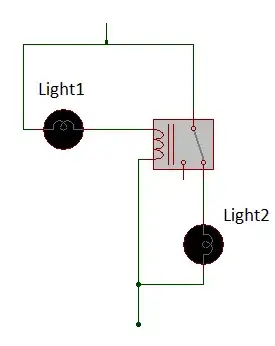I have a 60W, 120 VAC incandecent bulb used as a heater. Today it burned out and resulted in a water system freezing. I would like to be able to hook up a spare bulb that can come on if the first bulb goes out, or some similar system of redundancy. Unfortunately I work with DC more than AC, so I'm not sure how I can do this. Is there some easy way (a relay or something) that I could use to detect when bulb goes out?
-
1For detection I would use an LDR (light-dependent resistor) as long as you keep on using bulbs. – Trygve Laugstøl Nov 28 '12 at 15:00
-
4While you're in there messing with the setup, why not replace it with a more robust heater that can't burn out? – Random832 Nov 28 '12 at 15:57
4 Answers
Rather than "backing up" one unreliable component with another one, why not just replace the lamp with a 240Ω, 100-W power resistor attached to a heatsink? It will be much more reliable in the first place, and will also reduce the risk of starting a fire, since its operating temperature will be much lower.
- 172,781
- 17
- 234
- 402
Connect two larger wattage bulbs in series.
If the bulbs are the same wattage, the voltage on each will be half.
They will not light very bright, but they should last forever.
At half voltage, they will use half the current, that will be one quarter the wattage each.
So two pair of 60 watt bulbs in series, yields four dimly lit bulbs that still produce 60 watts of heat, and provide some redundancy for breakage.
Ohms law works with light bulbs, for calculating volt/amps per bulb, as in when using two unequal wattage bulbs, the reduced voltage on each bulb makes them last and last.
Example; 60w + 100w = 37.5w, with the 60w bulb will light brighter than the 100w.
- 636
- 1
- 5
- 9
-
3Ohm's law doesn't work with light bulbs. Bulbs are notoriously nonlinear. – markrages Nov 28 '12 at 17:01
-
^ That is correct. Bulbs have a low resistance when cold, and a higher one when at full brightness. The spread can be something like 12 ohms to 160 ohms. (IIRC; someone correct me). – Kaz Nov 28 '12 at 20:05
If you use a NC relay with a AC coil rated for the voltage that you system runs on you can connect the the primary light in series with the relay coil. And connect the backup light to the NC leg of the relay. So when the light is working the relay is held open, then if the light blows the relay will close and power the backup light.
This is what it would look like with no power supplied. Once there is power, Light 1 will turn on and the relay with be pulled open.

Sorry for the crappy schematic, I'm in a hurry. But I think you can get the gist of it.
- 4,978
- 1
- 22
- 48
-
Perfect. Looking around, I see a sizable number of relays normally used for HVAC, which gives me the idea of talking to a friend who works in HVAC to see what he recommends/uses in the systems he installs. – Dark Falcon Nov 28 '12 at 14:17
-
2Although you have accepted this answer, there's a problem with it. With the relay coil rated for your AC voltage, it will take almost all the voltage leaving almost nothing for the bulb! Which will barely glow, and let your water freeze. – Nov 28 '12 at 14:20
-
The problem is that when a light bulb dies, it can make a short circuit. Then this solution won't work. – Al Kepp Nov 28 '12 at 19:30
-
2Al Kepp, I have never seen a light bulb fail short-circuit, and I'm skeptical that it can happen at all, at least with a standard incandescent bulb. There are specific bulbs used in decorative lighting that do fail to short-circuit, but they're designed to do that. – Mark Bessey Nov 28 '12 at 21:14
-
@AlKepp I don't know this for a fact, but in the rare chance a bulb would short, that short would most likely melt it'self and resolve the short. – Garrett Fogerlie Nov 29 '12 at 15:19
-
I don't know how this is called exactly in English, so please excuse me for my plain English description: We have 230V/10A for lights. A fuse or a circuit breaker in house sometimes disconnets all lights or sometimes even whole house when a light bulb dies. There is a short pulse of overcurrent or short circuit when a bulb dies. Then it can be restarted again, because it is just a short pulse, but it is a big problem if you need to rely on the bulbs for automatic heating, because the circuit breaker disconnects the cirtuit. – Al Kepp Nov 29 '12 at 21:50
Find a low voltage (5 or 12V) relay whose coil operating current is the same as your bulb (0.5A for 120V 60W) with NC (Normally Closed) or C/O (Changeover) contacts.
Connect it in SERIES with the bulb.
The relay will be triggered while the first bulb is ON, and that will hold the second bulb OFF. When the first bulb fails, the relay will drop out, closing its contacts and lighting the second bulb. (The second bulb will flash briefly when you switch the circuit on)
-
Finding such a relay will be difficult. If you find one with a lower coil current rating, the correct resistor in parallel can be used to allow the full 0.5A to flow at the coil's voltage rating. Protect the whole lot with a fuse, just in case the bulb ever fails short-circuit! – Nov 28 '12 at 13:46
-